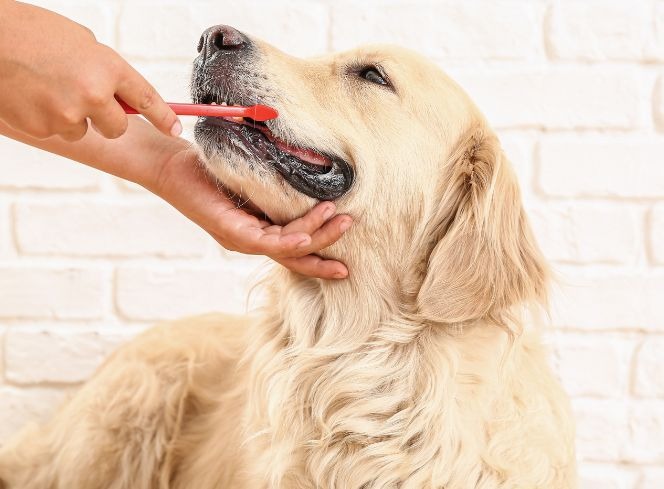Oral health for your dog is just as important as keeping your mouth and teeth clean as a human. Neglecting your dog’s teeth can lead to plaque build-up which can cause disease which is very common in dogs. To avoid your dog’s discomfort (and a large vet’s bill), it’s best to keep on top of your dog’s oral health. In this blog we discuss how to clean your dog’s teeth, and why it is so important.
Brushing Dogs Teeth
The way you brush your dog’s teeth will vary on their breed – check with your vet if you’re unsure, but there will be different ways you should be brushing due to your dog’s needs. For example, if you have a French Bulldog, or a flat-faced breed, due to the jaw alignment, you may need to be brushing in a certain way, and more frequently to avoid dental disease.
Brushing your dog’s teeth may need some training and extra guidance from you, as your dog may not willingly let you in their mouth. If possible, use our guide below to follow:
- Using your finger only, brush along your dog’s mouth until they’re comfortable with you brushing your finger across their teeth. Once they’re happy with you brushing their teeth, introduce doggy toothpaste and gently rub across the teeth.
- Once your dog is comfortable enough with you using your finger to ‘brush’ their teeth, you can progress to an actual brush. It’s good to use a specially designed doggy toothbrush as this has been tried and tested for the utmost comfort for your dog.
- Gradually build up your brushing time up to two minutes, 2-4 times a week. This might take time, but it should get easier the more gradually you do this.
- End with a high value reward when your dog cooperates with you and lets you brush their teeth. Try to pick a treat that promotes fresh breath and clean teeth.
It’s important you don’t use human toothpaste on your dog as it can be toxic. Enzymatic dog toothpaste will help to reduce the bad breath and break down plaque – dog toothpaste is often chicken or liver flavour which your dog will find super tasty!
How Often Should You Brush Dogs Teeth?

Daily brushing will help prevent the build-up of plaque and tartar which may lead to gingivitis and dental disease. Your dog’s teeth will be checked by your vet regularly but do keep a look out for any change in your dog’s eating habits, red or swollen gums, discolouration of teeth or fractured/missing teeth.
How To Freshen Dog's Breath Without Brushing
If your dog won’t let you in to brush their teeth, try to help them take care of their teeth naturally. Providing your dog with plenty of chew toys and dental treats can help to prevent plaque and tartar build up whilst also combatting boredom.

































































































